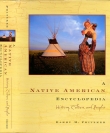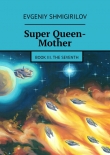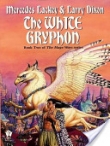
Текст книги "The British Study Edition of the Urantia Papers"
Автор книги: Tigran Aivazian
Жанр:
Религия
сообщить о нарушении
Текущая страница: 123 (всего у книги 295 страниц)
79:6.1 Sometime after driving the red man across to North America, the expanding Chinese cleared the Andonites from the river valleys of eastern Asia, pushing them north into Siberia and west into Turkestan, where they were soon to come in contact with the superior culture of the Andites.
79:6.2 In Burma and the peninsula of Indo-China the cultures of India and China mixed and blended to produce the successive civilizations of those regions. Here the vanished green race has persisted in larger proportion than anywhere else in the world.
79:6.3 Many different races occupied the islands of the Pacific. In general, the southern and then more extensive islands were occupied by peoples carrying a heavy percentage of green and indigo blood. The northern islands were held by Andonites and, later on, by races embracing large proportions of the yellow and red stocks. The ancestors of the Japanese people were not driven off the mainland until 12,000 B.C., when they were dislodged by a powerful southern-coastwise thrust of the northern Chinese tribes. Their final exodus was not so much due to population pressure as to the initiative of a chieftain whom they came to regard as a divine personage.
79:6.4 Like the peoples of India and the Levant, victorious tribes of the yellow man established their earliest centres along the coast and up the rivers. The coastal settlements fared poorly in later years as the increasing floods and the shifting courses of the rivers made the lowland cities untenable.
79:6.5 20,000 years ago the ancestors of the Chinese had built up a dozen strong centres of primitive culture and learning, especially along the Yellow River and the Yangtze. And now these centres began to be reinforced by the arrival of a steady stream of superior blended peoples from Sinkiang and Tibet. The migration from Tibet to the Yangtze valley was not so extensive as in the north, neither were the Tibetan centres so advanced as those of the Tarim basin. But both movements carried a certain amount of Andite blood eastward to the river settlements.
79:6.6 The superiority of the ancient yellow race was due to four great factors:
79:6.7 1. Genetic. Unlike their blue cousins in Europe, both the red and yellow races had largely escaped mixture with debased human stocks. The northern Chinese, already strengthened by small amounts of the superior red and Andonic strains, were soon to benefit by a considerable influx of Andite blood. The southern Chinese did not fare so well in this regard, and they had long suffered from absorption of the green race, while later on they were to be further weakened by the infiltration of the swarms of inferior peoples crowded out of India by the Dravidian-Andite invasion. And today in China there is a definite difference between the northern and southern races.
79:6.8 2. Social. The yellow race early learned the value of peace among themselves. Their internal peaceableness so contributed to population increase as to ensure the spread of their civilization among many millions. From 25,000 to 5000 B.C. the highest mass civilization on Urantia was in central and northern China. The yellow man was first to achieve a racial solidarity – the first to attain a large-scale cultural, social, and political civilization.
79:6.9 The Chinese of 15,000 B.C. were aggressive militarists; they had not been weakened by an overreverence for the past, and numbering less than 12,000,000, they formed a compact body speaking a common language. During this age they built up a real nation, much more united and homogeneous than their political unions of historic times.
79:6.10 3. Spiritual. During the age of Andite migrations the Chinese were among the more spiritual peoples of earth. Long adherence to the worship of the One Truth proclaimed by Singlangton kept them ahead of most of the other races. The stimulus of a progressive and advanced religion is often a decisive factor in cultural development; as India languished, so China forged ahead under the invigorating stimulus of a religion in which truth was enshrined as the supreme Deity.
79:6.11 This worship of truth was provocative of research and fearless exploration of the laws of nature and the potentials of mankind. The Chinese of even 6,000 years ago were still keen students and aggressive in their pursuit of truth.
79:6.12 4. Geographic. China is protected by the mountains to the west and the Pacific to the east. Only in the north is the way open to attack, and from the days of the red man to the coming of the later descendants of the Andites, the north was not occupied by any aggressive race.
79:6.13 And but for the mountain barriers and the later decline in spiritual culture, the yellow race undoubtedly would have attracted to itself the larger part of the Andite migrations from Turkestan and unquestionably would have quickly dominated world civilization.
7. THE ANDITES ENTER CHINA79:7.1 About 15,000 years ago the Andites, in considerable numbers, were traversing the pass of Ti Tao and spreading out over the upper valley of the Yellow River among the Chinese settlements of Kansu. Presently they penetrated eastward to Honan, where the most progressive settlements were situated. This infiltration from the west was about half Andonite and half Andite.
79:7.2 The northern centres of culture along the Yellow River had always been more progressive than the southern settlements on the Yangtze. Within a few thousand years after the arrival of even the small numbers of these superior mortals, the settlements along the Yellow River had forged ahead of the Yangtze villages and had achieved an advanced position over their brethren in the south which has ever since been maintained.
79:7.3 ¶ It was not that there were so many of the Andites, nor that their culture was so superior, but amalgamation with them produced a more versatile stock. The northern Chinese received just enough of the Andite strain to mildly stimulate their innately able minds but not enough to fire them with the restless, exploratory curiosity so characteristic of the northern white races. This more limited infusion of Andite inheritance was less disturbing to the innate stability of the Sangik type.
79:7.4 ¶ The later waves of Andites brought with them certain of the cultural advances of Mesopotamia; this is especially true of the last waves of migration from the west. They greatly improved the economic and educational practices of the northern Chinese; and while their influence upon the religious culture of the yellow race was short-lived, their later descendants contributed much to a subsequent spiritual awakening. But the Andite traditions of the beauty of Eden and Dalamatia did influence Chinese traditions; early Chinese legends place “the land of the gods” in the west.
79:7.5 The Chinese people did not begin to build cities and engage in manufacture until after 10,000 B.C., subsequent to the climatic changes in Turkestan and the arrival of the later Andite immigrants. The infusion of this new blood did not add so much to the civilization of the yellow man as it stimulated the further and rapid development of the latent tendencies of the superior Chinese stocks. From Honan to Shensi the potentials of an advanced civilization were coming to fruit. Metalworking and all the arts of manufacture date from these days.
79:7.6 The similarities between certain of the early Chinese and Mesopotamian methods of time reckoning, astronomy, and governmental administration were due to the commercial relationships between these two remotely situated centres. Chinese merchants travelled the overland routes through Turkestan to Mesopotamia even in the days of the Sumerians. Nor was this exchange one-sided – the valley of the Euphrates benefited considerably thereby, as did the peoples of the Gangetic plain. But the climatic changes and the nomadic invasions of the third millennium before Christ greatly reduced the volume of trade passing over the caravan trails of central Asia.
8. LATER CHINESE CIVILIZATION79:8.1 While the red man suffered from too much warfare, it is not altogether amiss to say that the development of statehood among the Chinese was delayed by the thoroughness of their conquest of Asia. They had a great potential of racial solidarity, but it failed properly to develop because the continuous driving stimulus of the ever-present danger of external aggression was lacking.
79:8.2 With the completion of the conquest of eastern Asia the ancient military state gradually disintegrated – past wars were forgotten. Of the epic struggle with the red race there persisted only the hazy tradition of an ancient contest with the archer peoples. The Chinese early turned to agricultural pursuits, which contributed further to their pacific tendencies, while a population well below the land-man ratio for agriculture still further contributed to the growing peacefulness of the country.
79:8.3 Consciousness of past achievements (somewhat diminished in the present), the conservatism of an overwhelmingly agricultural people, and a well-developed family life equalled the birth of ancestor veneration, culminating in the custom of so honouring the men of the past as to border on worship. A very similar attitude prevailed among the white races in Europe for some 500 years following the disruption of Graeco-Roman civilization.
79:8.4 The belief in, and worship of, the “One Truth” as taught by Singlangton never entirely died out; but as time passed, the search for new and higher truth became overshadowed by a growing tendency to venerate that which was already established. Slowly the genius of the yellow race became diverted from the pursuit of the unknown to the preservation of the known. And this is the reason for the stagnation of what had been the world’s most rapidly progressing civilization.
79:8.5 ¶ Between 4000 and 500 B.C. the political reunification of the yellow race was consummated, but the cultural union of the Yangtze and Yellow river centres had already been effected. This political reunification of the later tribal groups was not without conflict, but the societal opinion of war remained low; ancestor worship, increasing dialects, and no call for military action for thousands upon thousands of years had rendered this people ultrapeaceful.
79:8.6 Despite failure to fulfil the promise of an early development of advanced statehood, the yellow race did progressively move forward in the realization of the arts of civilization, especially in the realms of agriculture and horticulture. The hydraulic problems faced by the agriculturists in Shensi and Honan demanded group co-operation for solution. Such irrigation and soil-conservation difficulties contributed in no small measure to the development of interdependence with the consequent promotion of peace among farming groups.
79:8.7 Soon developments in writing, together with the establishment of schools, contributed to the dissemination of knowledge on a previously unequalled scale. But the cumbersome nature of the ideographic writing system placed a numerical limit upon the learned classes despite the early appearance of printing. And above all else, the process of social standardization and religio-philosophic dogmatization continued apace. The religious development of ancestor veneration became further complicated by a flood of superstitions involving nature worship, but lingering vestiges of a real concept of God remained preserved in the imperial worship of Shang-ti.
79:8.8 The great weakness of ancestor veneration is that it promotes a backward-looking philosophy. However wise it may be to glean wisdom from the past, it is folly to regard the past as the exclusive source of truth. Truth is relative and expanding; it lives always in the present, achieving new expression in each generation of men – even in each human life.
79:8.9 The great strength in a veneration of ancestry is the value that such an attitude places upon the family. The amazing stability and persistence of Chinese culture is a consequence of the paramount position accorded the family, for civilization is directly dependent on the effective functioning of the family; and in China the family attained a social importance, even a religious significance, approached by few other peoples.
79:8.10 The filial devotion and family loyalty exacted by the growing cult of ancestor worship ensured the building up of superior family relationships and of enduring family groups, all of which facilitated the following factors in the preservation of civilization:
79:8.11 1. Conservation of property and wealth.
79:8.12 2. Pooling of the experience of more than one generation.
79:8.13 3. Efficient education of children in the arts and sciences of the past.
79:8.14 4. Development of a strong sense of duty, the enhancement of morality, and the augmentation of ethical sensitivity.
79:8.15 ¶ The formative period of Chinese civilization, opening with the coming of the Andites, continues on down to the great ethical, moral, and semireligious awakening of the sixth century before Christ. And Chinese tradition preserves the hazy record of the evolutionary past; the transition from mother– to father-family, the establishment of agriculture, the development of architecture, the initiation of industry – all these are successively narrated. And this story presents, with greater accuracy than any other similar account, the picture of the magnificent ascent of a superior people from the levels of barbarism. During this time they passed from a primitive agricultural society to a higher social organization embracing cities, manufacture, metalworking, commercial exchange, government, writing, mathematics, art, science, and printing.
79:8.16 And so the ancient civilization of the yellow race has persisted down through the centuries. It is almost 40,000 years since the first important advances were made in Chinese culture, and though there have been many retrogressions, the civilization of the sons of Han comes the nearest of all to presenting an unbroken picture of continual progression right on down to the times of the XX century. The mechanical and religious developments of the white races have been of a high order, but they have never excelled the Chinese in family loyalty, group ethics, or personal morality.
79:8.17 This ancient culture has contributed much to human happiness; millions of human beings have lived and died, blessed by its achievements. For centuries this great civilization has rested upon the laurels of the past, but it is even now reawakening to envision anew the transcendent goals of mortal existence, once again to take up the unremitting struggle for never-ending progress.
79:8.18 [Presented by an Archangel of Nebadon.]
PAPER № 80
ANDITE EXPANSION IN THE OCCIDENT
Archangel
80:0.1 Although the European blue man did not of himself achieve a great cultural civilization, he did supply the biologic foundation which, when its Adamized strains were blended with the later Andite invaders, produced one of the most potent stocks for the attainment of aggressive civilization ever to appear on Urantia since the times of the violet race and their Andite successors.
80:0.2 The modern white peoples incorporate the surviving strains of the Adamic stock which became admixed with the Sangik races, some red and yellow but more especially the blue. There is a considerable percentage of the original Andonite stock in all the white races and still more of the early Nodite strains.
1. THE ADAMITES ENTER EUROPE80:1.1 Before the last Andites were driven out of the Euphrates valley, many of their brethren had entered Europe as adventurers, teachers, traders, and warriors. During the earlier days of the violet race the Mediterranean trough was protected by the Gibraltar isthmus and the Sicilian land bridge. Some of man’s very early maritime commerce was established on these inland lakes, where blue men from the north and the Saharans from the south met Nodites and Adamites from the east.
80:1.2 In the eastern trough of the Mediterranean the Nodites had established one of their most extensive cultures and from these centres had penetrated somewhat into southern Europe but more especially into northern Africa. The broad-headed Nodite-Andonite Syrians very early introduced pottery and agriculture in connection with their settlements on the slowly rising Nile delta. They also imported sheep, goats, cattle, and other domesticated animals and brought in greatly improved methods of metalworking, Syria then being the centre of that industry.
80:1.3 For more than 30,000 years Egypt received a steady stream of Mesopotamians, who brought along their art and culture to enrich that of the Nile valley. But the ingress of large numbers of the Sahara peoples greatly deteriorated the early civilization along the Nile so that Egypt reached its lowest cultural level some 15,000 years ago.
80:1.4 But during earlier times there was little to hinder the westward migration of the Adamites. The Sahara was an open grazing land overspread by herders and agriculturists. These Saharans never engaged in manufacture, nor were they city builders. They were an indigo-black group which carried extensive strains of the extinct green and orange races. But they received a very limited amount of the violet inheritance before the upthrust of land and the shifting water-laden winds dispersed the remnants of this prosperous and peaceful civilization.
80:1.5 Adam’s blood has been shared with most of the human races, but some secured more than others. The mixed races of India and the darker peoples of Africa were not attractive to the Adamites. They would have mixed freely with the red man had he not been far removed in the Americas, and they were kindly disposed toward the yellow man, but he was likewise difficult of access in faraway Asia. Therefore, when actuated by either adventure or altruism, or when driven out of the Euphrates valley, they very naturally chose union with the blue races of Europe.
80:1.6 The blue men, then dominant in Europe, had no religious practices which were repulsive to the earlier migrating Adamites, and there was great sex attraction between the violet and the blue races. The best of the blue men deemed it a high honour to be permitted to mate with the Adamites. Every blue man entertained the ambition of becoming so skillful and artistic as to win the affection of some Adamite woman, and it was the highest aspiration of a superior blue woman to receive the attentions of an Adamite.
80:1.7 Slowly these migrating sons of Eden united with the higher types of the blue race, invigorating their cultural practices while ruthlessly exterminating the lingering strains of Neanderthal stock. This technique of race blending, combined with the elimination of inferior strains, produced a dozen or more virile and progressive groups of superior blue men, one of which you have denominated the Cro-Magnons.
80:1.8 For these and other reasons, not the least of which was more favourable paths of migration, the early waves of Mesopotamian culture made their way almost exclusively to Europe. And it was these circumstances that determined the antecedents of modern European civilization.
2. CLIMATIC AND GEOLOGIC CHANGES80:2.1 The early expansion of the violet race into Europe was cut short by certain rather sudden climatic and geologic changes. With the retreat of the northern ice fields the water-laden winds from the west shifted to the north, gradually turning the great open pasture regions of Sahara into a barren desert. This drought dispersed the smaller-statured brunets, dark-eyed but long-headed dwellers of the great Sahara plateau.
80:2.2 The purer indigo elements moved southward to the forests of central Africa, where they have ever since remained. The more mixed groups spread out in three directions: The superior tribes to the west migrated to Spain and thence to adjacent parts of Europe, forming the nucleus of the later Mediterranean long-headed brunet races. The least progressive division to the east of the Sahara plateau migrated to Arabia and thence through northern Mesopotamia and India to faraway Ceylon. The central group moved north and east to the Nile valley and into Palestine.
80:2.3 It is this secondary Sangik substratum that suggests a certain degree of kinship among the modern peoples scattered from the Deccan through Iran, Mesopotamia, and along both shores of the Mediterranean Sea.
80:2.4 ¶ About the time of these climatic changes in Africa, England separated from the continent, and Denmark arose from the sea, while the isthmus of Gibraltar, protecting the western basin of the Mediterranean, gave way as the result of an earthquake, quickly raising this inland lake to the level of the Atlantic Ocean. Presently the Sicilian land bridge submerged, creating one sea of the Mediterranean and connecting it with the Atlantic Ocean. This cataclysm of nature flooded scores of human settlements and occasioned the greatest loss of life by flood in all the world’s history.
80:2.5 This engulfment of the Mediterranean basin immediately curtailed the westward movements of the Adamites, while the great influx of Saharans led them to seek outlets for their increasing numbers to the north and east of Eden. As the descendants of Adam journeyed northward from the valleys of the Tigris and Euphrates, they encountered mountainous barriers and the then expanded Caspian Sea. And for many generations the Adamites hunted, herded, and tilled the soil around their settlements scattered throughout Turkestan. Slowly this magnificent people extended their territory into Europe. But now the Adamites enter Europe from the east and find the culture of the blue man thousands of years behind that of Asia since this region has been almost entirely out of touch with Mesopotamia.








